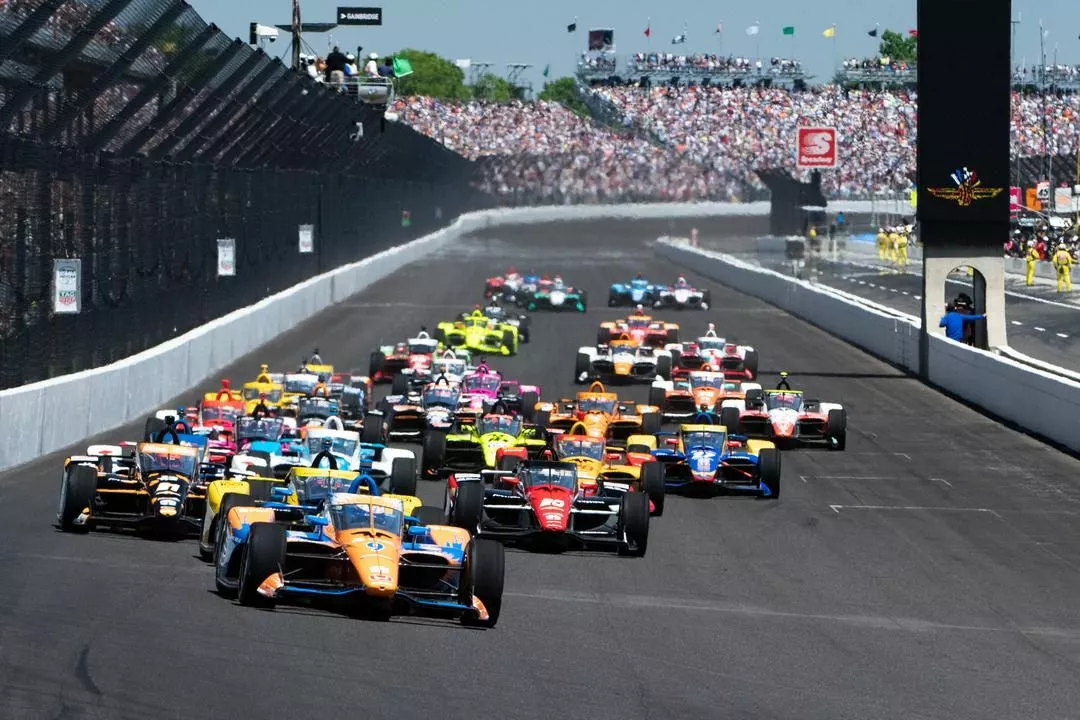An Introduction to the Indianapolis 500
The Indianapolis 500, also known as the Indy 500, is one of the most famous and prestigious car races in the world. Held annually at the Indianapolis Motor Speedway in Indiana, this event is steeped in history and tradition, having been first run in 1911. The race is part of the IndyCar Series, which is the premier level of open-wheel racing in North America. In this article, we'll explore the ins and outs of the Indianapolis 500, including its history, the track, the cars, and, of course, whether or not it's boring to watch.
The History of the Indy 500
As mentioned earlier, the Indianapolis 500 has a long and storied history, dating back over a century. The race was the brainchild of Carl Fisher, one of the founders of the Indianapolis Motor Speedway. He believed that a 500-mile race would be the perfect way to showcase the capabilities of the new automobiles being developed at the time. The first race, held on May 30, 1911, was won by Ray Harroun, who drove a Marmon Wasp to victory. Since then, the race has been held every year, except during World War I and World War II, when the Speedway was closed for the duration.
Throughout its history, the Indy 500 has been a showcase for innovation in racing technology. Early races featured cars with front-wheel drive, rear-wheel drive, and even four-wheel drive, as well as engines mounted in the front, middle, and rear of the chassis. Over time, the race has seen numerous changes in rules and regulations, all aimed at improving safety and competitiveness. Today, the cars that race in the Indy 500 are purpose-built, single-seat, open-wheel machines that are designed to achieve incredible speeds while remaining safe for the drivers.
The Indianapolis Motor Speedway
The Indianapolis Motor Speedway is a 2.5-mile (4.0 km) oval track with four distinct turns, each banked at a 9-degree angle. The track has a rich history of its own, having been built in 1909 as a testing facility for the fledgling auto industry. Since then, it has become synonymous with the Indy 500 and is considered hallowed ground by many racing fans.
What makes the Speedway unique, and perhaps somewhat challenging for drivers, is its layout. Unlike many other oval tracks, the turns at Indianapolis are not continuous, meaning that drivers must navigate four separate turns, rather than two long, sweeping bends. This requires precision and skill, as the cars reach speeds of over 230 miles per hour (370 km/h) on the straights, only to slow down significantly for each turn. Additionally, the track's long straightaways allow for intense drafting battles, where drivers use the slipstream of the car in front to gain an advantage.
The Cars and Drivers of the Indy 500
As previously mentioned, the cars that compete in the Indianapolis 500 are purpose-built, single-seat, open-wheel machines. They are powered by 2.2-liter twin-turbocharged V6 engines, which produce around 700 horsepower. The cars are made primarily of carbon fiber and aluminum, making them incredibly light and agile. In terms of aerodynamics, they feature large front and rear wings, as well as intricate bodywork designed to optimize airflow and generate downforce.
The drivers who compete in the Indy 500 are some of the most talented and dedicated racers in the world. They come from all corners of the globe and represent a diverse range of backgrounds and experience levels. Some are seasoned veterans who have competed in the race for years, while others are young, up-and-coming drivers looking to make their mark on the world stage. Regardless of their backgrounds, all share a common goal: to win the prestigious Borg-Warner Trophy and etch their names in the annals of racing history.
Is the Indianapolis 500 Boring to Watch?
The question of whether the Indy 500 is boring to watch is, of course, subjective. However, there are several aspects of the race that many fans find captivating. First, there's the sheer speed of the event. With cars reaching speeds of over 230 miles per hour (370 km/h), the action on the track is undeniably thrilling. Additionally, the race often features numerous lead changes and close battles for position, which can make for exciting viewing.
Another aspect that can make the Indy 500 engaging is the strategy involved. Teams and drivers must balance the need for speed with the need to conserve fuel and tires, leading to a fascinating game of cat and mouse as they try to outsmart one another. Pit stops, where cars come in for fresh tires and fuel, can also be crucial and can make the difference between winning and losing.
Finally, the pageantry and tradition surrounding the race add an extra layer of excitement for many fans. From the singing of "Back Home Again in Indiana" to the winner's celebratory swig of milk, the Indy 500 is filled with time-honored rituals that make it a truly unique event. So, while some may find the race boring, many others are captivated by the speed, strategy, and spectacle of this legendary contest.
